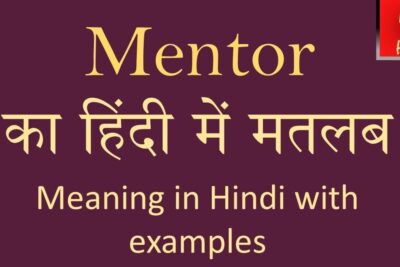
Exploring the Depth of Possessive Meaning in Urdu: A Linguistic Analysis

Discover the possessive meaning in Urdu and delve into the intricate world of language ownership. Uncover the nuances and significance behind possessive pronouns in this fascinating exploration. Join us as we unravel the depth and cultural connotations of possessiveness in the Urdu language.
- Understanding the Significance of Possessive Forms in Urdu Language
- What does possessive person mean?
- What is meant by possessive in Urdu?
- What does its possessive mean?
- What is possessive and example?
-
Frequent questions
- What is the significance of possessive pronouns in Urdu language when discussing the meaning of things?
- How does the possessive form convey ownership and relationships in Urdu compared to other languages?
- In what ways does understanding possessive meaning in Urdu enhance our comprehension of the cultural significance of objects and possessions?
Understanding the Significance of Possessive Forms in Urdu Language
Sure! In the Urdu language, possessive forms play a crucial role in conveying relationships and ownership. The use of possessive forms helps establish connections between individuals and objects, indicating who owns or is associated with what. Understanding these possessive forms is essential for grasping the nuances and intricacies of Urdu communication and culture.
Maybe you may be interestedThe Essence of Love: Exploring Its Meaning in Urdu CultureIn Urdu, possessive forms are expressed through suffixes attached to nouns. For example, "my book" is translated as "meri kitaab," where "meri" indicates possession by the speaker. Similarly, "his house" is rendered as "uska ghar," with "uska" denoting possession by a third person.
By mastering possessive forms in Urdu, one can not only navigate conversations more effectively but also gain insights into the dynamics of relationships and identities within the language. These possessive forms enrich the meaning of expressions, reflecting social hierarchies, familial ties, and emotional connections in subtle yet significant ways.
Maybe you may be interestedExploring the Essence: Occupation Meaning in UrduOverall, recognizing the significance of possessive forms in Urdu language enhances one's comprehension of the intricate web of meanings woven into linguistic interactions. Embracing and internalizing these nuances contribute to a deeper understanding of the cultural fabric and values embedded in Urdu expression.
What does possessive person mean?
A possessive person refers to someone who excessively controls or dominates things or people that belong to them. This can manifest in various ways, such as being jealous, overly protective, or unwilling to share their belongings or loved ones with others. Possessive behavior often stems from insecurity or a fear of loss. It can be harmful to relationships and may indicate a lack of trust or respect for others' autonomy.
Maybe you may be interestedUncommon Insights: Unraveling the Stalk Meaning in UrduWhat is meant by possessive in Urdu?
In the context of "meaning of things," the term "possessive" in Urdu is مضاف اليه. This term is used to indicate possession or ownership of something by someone. It is commonly used in phrases or sentences to show the relationship between two entities, typically in the form of "noun + 's" or "of + noun" constructions.
What does its possessive mean?
In the context of meaning of things, "its possessive" refers to the possessive form of the pronoun "it."
Maybe you may be interestedThe Enigmatic Tale of 'Troll' Meaning in Urdu: Unveiling its Hidden RootsWhen we use its in a sentence, we are indicating that something belongs to or is associated with the subject that does not have a gender. This can be a bit confusing because in English, we usually use an apostrophe followed by an "s" ('s) to indicate possession (e.g. the dog's bone). However, with "it," the possessive form is simply "its" without an apostrophe.
For example: "The tree lost all of its leaves in the fall." This sentence indicates that the leaves belong to the tree.
Maybe you may be interestedUnveiling the Symbolism Behind the Number 69: Its Deeper Meaning RevealedWhat is possessive and example?
Possessive refers to showing ownership or possession over something. It indicates that something belongs to someone or is associated with them.
Example:
Maybe you may be interestedUnlocking the Secret: Ayesha Name Meaning in Urdu- "This is my book." (The word "my" is possessive, showing that the book belongs to the speaker.)
Frequent questions
What is the significance of possessive pronouns in Urdu language when discussing the meaning of things?
Possessive pronouns in Urdu language play a crucial role in indicating ownership or relationship with things. They help establish a clear connection between the object and the owner, adding depth to the meaning of the objects being discussed.
How does the possessive form convey ownership and relationships in Urdu compared to other languages?
The possessive form in Urdu, like in many other languages, conveys ownership and relationships through the use of possessive markers attached to nouns. These markers indicate possession or belonging to a specific person or thing. However, the nuances and cultural connotations of possessiveness may vary across languages due to different grammatical structures and societal norms.
Maybe you may be interestedTitle: Decoding the Snafu Meaning: Understanding the Origins and SignificanceIn what ways does understanding possessive meaning in Urdu enhance our comprehension of the cultural significance of objects and possessions?
Understanding possessive meaning in Urdu enhances our comprehension of the cultural significance of objects and possessions by providing insights into the personal connections and emotional attachments individuals have towards their belongings, reflecting deeper cultural values and societal norms related to ownership, inheritance, and relationships.
Si quieres conocer otros artículos parecidos a Exploring the Depth of Possessive Meaning in Urdu: A Linguistic Analysis puedes visitar la categoría SOCIETY.




